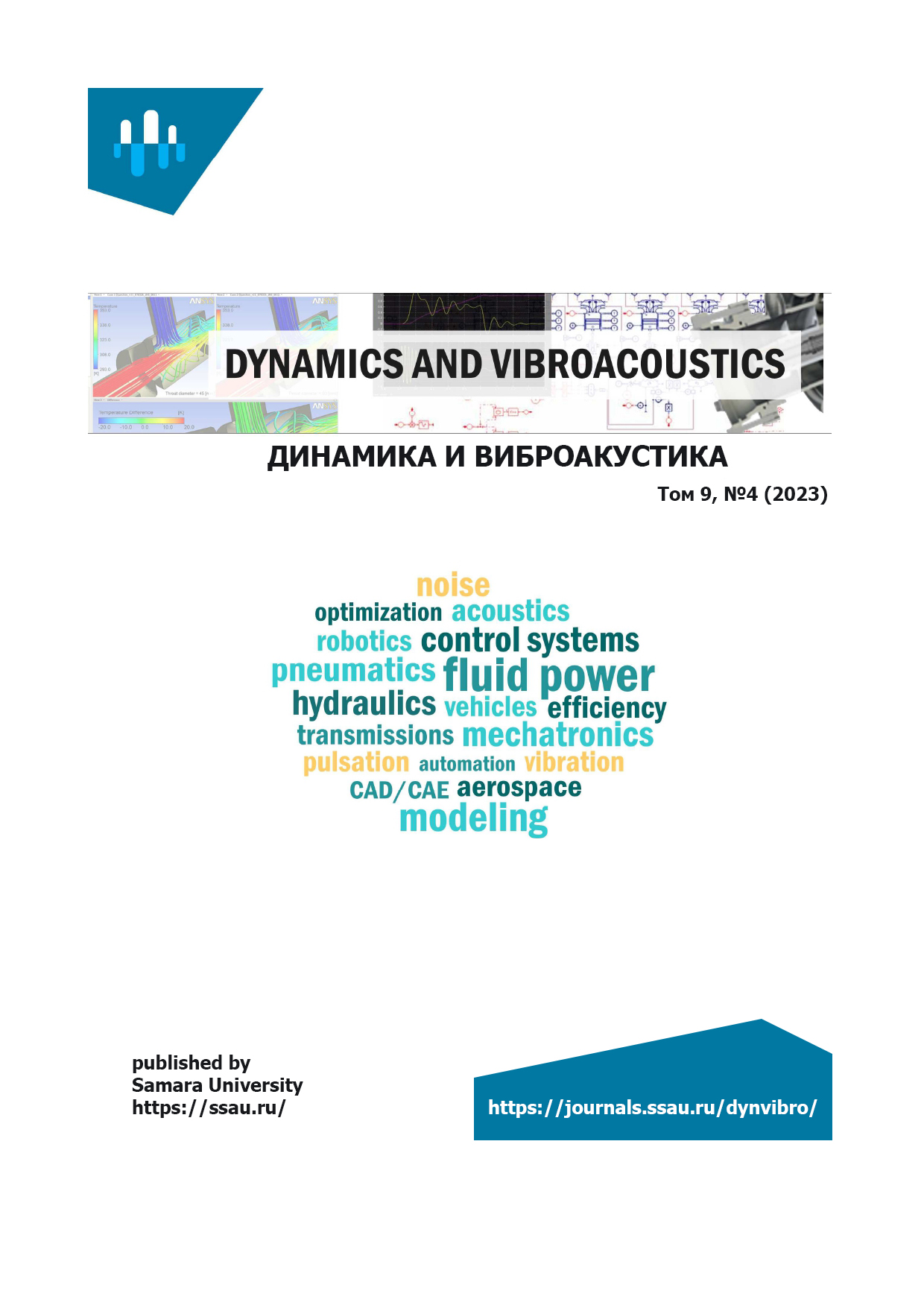Abstract
A hydraulic drive with magnetorheological control is an effective solution when it is necessary to ensure precise positioning of a massive object. The magnetorheological drive is capable of positioning an object weighing up to 100 kg with an error of up to 50 nm. The dynamic characteristics of the working fluid flow in various sections of the pipeline determine the technical characteristics of the device as a whole.
In this paper, the hydraulic characteristics of the drive are studied by the finite element method under laminar flow conditions. A study of the pressure at the inlet and outlet of the magnetorheological throttle showed that the pressure drop ranges from 8.2 kPa to 26.2 kPa, depending on the pressure at the inlet of the hydraulic system and the location of the throttle. The fluid flow velocity in the technological gap was 1 m/s in the center of the channel and allows us to evaluate the behavior of the drive at various operating pressures, as well as subsequently carry out a complete modeling of the system to implement the mechanism control system.







